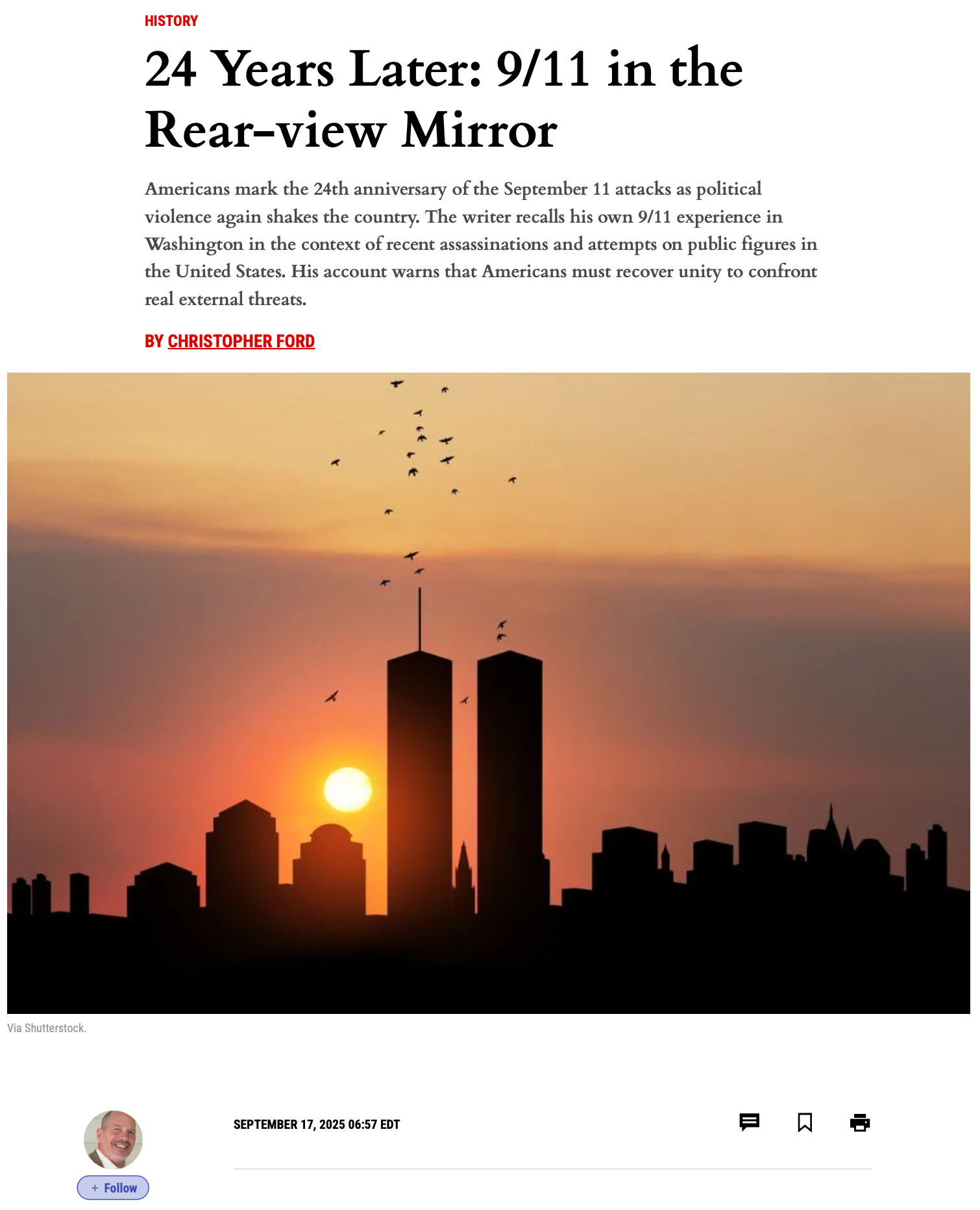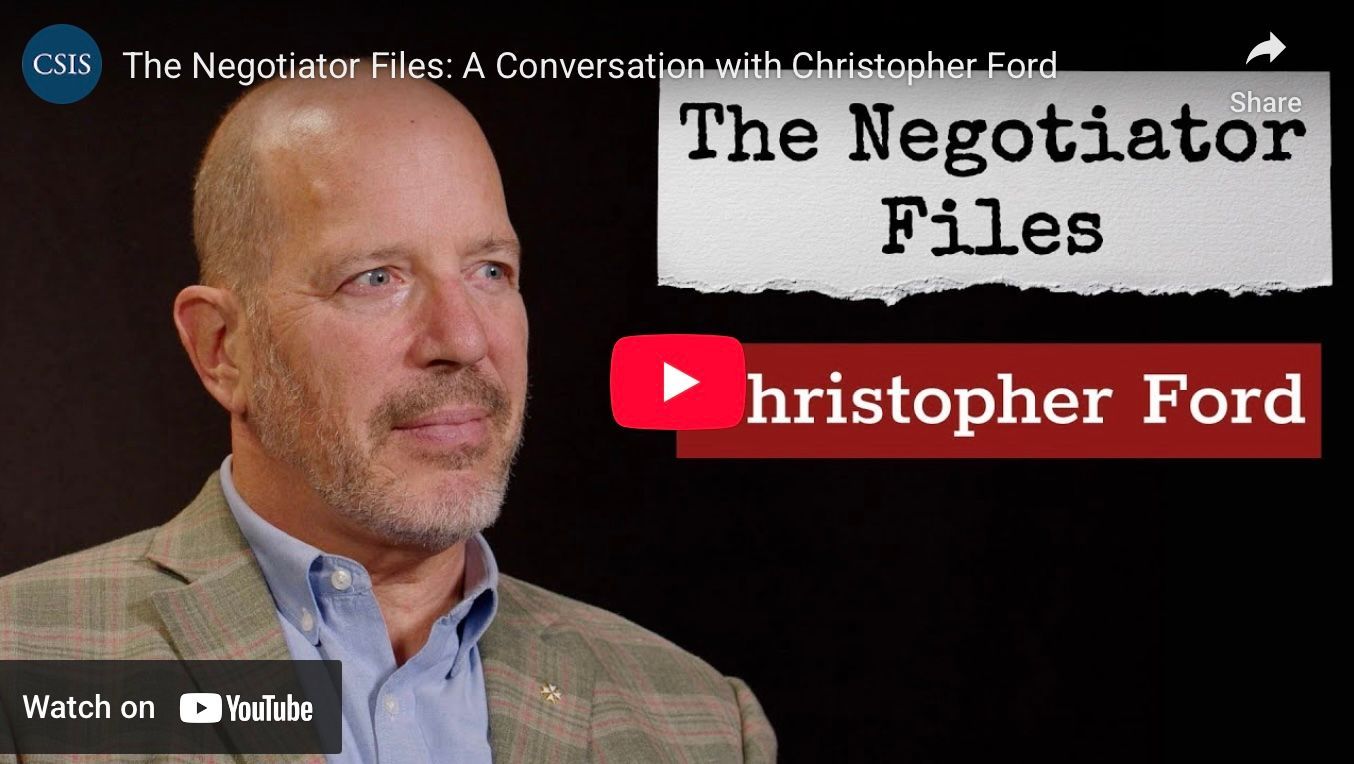Opportunistic or Coordinated Adversary Aggression and the Nuclear Force Posture Problem of “Numbers and Types”
Below is the text upon which Dr. Ford based his remarks on a webinar organized by the National Institute for Public Policy (NIPP) on April 28, 2025.
Thanks for inviting me. Matt Costlow has done great work in his most recent NIPP Occasional Paper in providing a valuable look at the problem of opportunistic or coordinated aggression and putting it in historical context. My fellow panelists have also made excellent points drawing out various aspects of the problem and how we can help mitigate or manage these dangers, especially in connection with building a stronger conventional force and working with our allies.
For my contribution to this discussion, I’d like to offer a few thoughts about the aspect of this broader challenge that relates to our own nuclear posture: what I call “the problem of numbers and types.” As always, I can only offer my personal opinions, which won’t necessarily correspond to those of anyone else. But let’s give it a go.
The Need for a Larger Arsenal
With respect to what we need to deter aggression and to limit damage in the event that deterrence were to fail, the potential for opportunistic or coordinated aggression between our adversaries clearly confronts us with huge challenges. In light of that challenge, is our arsenal big enough? If not, what do we need to have more of?
The Washington policy community has finally come around to understanding that we do have a numbers-and-types problem. The 2023 report of the Strategic Posture Review Commission took a huge stride in declaring – unanimously, on a bipartisan basis – that the current U.S. nuclear modernization Program of Record (POR) was “absolutely essential” but at the same time “not sufficient to meet the new threats posed by Russia and China.” (We had hoped to say a bit more on such topics in the already-drafted report of a similarly bipartisan senior study group convened by the U.S. Institute of Peace [USIP], but our consensus document remains in limbo as a result of USIP’s recent DOGE-ification.)
So while the problem of numbers and type has been raised, it remains to be squarely addressed. It is increasingly understood that we do need more, but there is no broad agreement yet on exactly how many and of what.
In his paper, Matt urges that we start uploading more warheads on our Intercontinental Ballistic Missiles (ICBMs), purchase “at least four” additional Columbia-class ballistic missile submarines beyond the POR, and increase our planned buy of B-21 Raider bombers. He also suggests we speed up deployment of the nuclear-armed sea-launched cruise missile (SLCM-N), develop a nuclear-armed variant of the U.S. Army’s Long-Range Hypersonic Weapon, and develop “a mobile, land-based, short- to medium-range, ballistic or hypersonic system, with a low-yield warhead that is deployable in theater.” There’s a lot to be said for taking those steps, but we’re still some ways from circling in on broad agreement on a new, “beyond-the-POR” agenda.
How Many Do We Need?
Take, for instance, the question of how many weapons we need. We’ve felt reasonably comfortable for years vis-à-vis Russia with the U.S. arsenal at its current New START level of 1,550 operational strategic weapons. Even there, however – and assuming the Kremlin doesn’t start up-arming after that treaty expires next year, or even before – we face a growing problem due to the asymmetry in theater-level forces.
That asymmetry is destabilizing, with the Kremlin using its advantage in lower-yield and shorter-range systems for coercive diplomacy as it implements what I call an “offensive nuclear umbrella” strategy of invading its neighbors under what the Biden Administration called a “shield” of nuclear escalatory threats. This was a problem we recognized in the First Trump Administration, and which we at least tried to begin answering by deploying the W76-2 lower-yield weapon and by starting work on SLCM-N. But that problem is still worsening as Russia continues to develop its sub-strategic arsenal, and this has been exacerbated by the Biden Administration having dragged its feet on SLCM-N. Accordingly, even if we didn’t have a China problem at the same time – which, of course, we do – the United States would still need new nuclear systems that we presently do not have.
When you add in the challenge presented by China’s sprint toward what is likely to be at least nuclear parity in a decade, of course, the problem gets much worse. (And don’t forget the additional complicating factors of nuclear-armed North Korea and potentially soon also Iran, though I won’t address them here.) The number of targets we would we need to be able to hold at risk in a few years’ time will presumably be significantly greater than the number we did when New START was ratified 15 years ago.
To be sure, it doesn’t necessarily follow that if 1,550 warheads is needed to deter one near-peer adversary then you need 3,100 to deter two of them, though conceivably it might. The question of numbers is actually a very challenging one, involving as it does questions not just about force size and the targeteering science of holding at risk specific types of asset or facility, but also about what targets we want to hold at risk in the first place.
Deterrence vs. Damage Limitation
So what does each adversary care about enough that threatening that thing would help deter aggression? And what would we need to be able to strike if deterrence failed, and we thus needed to minimize that adversary’s capacity to hit and hurt us in the fight?
Perhaps significantly, those two questions may well yield divergent answers, for the potential target set threats to which would best deter the bad guy from starting a war in the first place might actually be a somewhat differentset than you would want to destroy for purposes of damage limitation once fighting had begun.
What the adversary most prizes is an essentially empirical question – one that in principle should be decided on the basis of deep study of his thinking and circumstances, so that your deterrent signaling can be “tailored” to the minds one wishes to influence. If it turns out that he cares most about protecting his nuclear weapons, then I suppose a pure “nuclear-on-nuclear” counterforce approach would suffice for both deterrence and for damage limitation.
But if the thing he most cared about protecting isn’t his nuclear arsenal, the targeting requirements for deterrence and for damage limitation would tend to diverge. If they do – and if you still want to be capable of meeting both objectives – you might need to be able to cover both sets of targets. If you didn’t maintain the ability to cover more than what you’d need to target for pure damage limitation, after all, you would be less effective in deterring your adversary, since actually executing your deterrent threat would bring you below the number of weapons you want for damage limitation. This would make your deterrent threat less credible, and presumably thus also make aggression more likely. Accordingly, unless you were quite confident that the requirements of deterrence and damage limitation are exactly the same, you’d have reason to bump up your numbers to be able to handle both target sets – additively rather than alternatively.
In the short-term, our response to such numerical challenges can presumably only come through uploading, as both Matt and I have advocated. That wouldn’t really get us too much vis-à-vis Russia, of course, because the Russians could easily upload too (though just adding warheads to already-deployed delivery systems doesn’t necessarily drive up the number of aim-points you’d need to cover). At the least, however, uploading would at least delay the point at which China reaches parity, buying us a little more time in which to pursue better longer-term answers.
New Types of Weapon?
Beyond the stop-gap of uploading, such longer-term answers would surely involve complex trade-offs between capability, cost, and timing. In this respect, I suspect we still have a lot of intellectual spadework to do – not just on numbers but also with respect to questions about the potential long-term need for new types of nuclear weapon or delivery system.
- What new capability, for instance, would give us the most deterrent and potential warfighting value most inexpensively and rapidly? Do we need to shift more to cruder “Willys MB Jeep” or “VW Bug”-type nuclear devices that can be produced more quickly and cheaply in response to future needs than our current “Ferrari”-type designs?
- To best deter our adversaries, should we develop new devices that can better do things that “normal” nuclear weapons have difficulty doing – such as destroying hardened and deeply-buried targets (HDBTs), or producing neutron-bomb-style area effects that would be handy against invading Russian battalion tactical groups (BTGs) on land, or Chinese amphibious flotillas at sea?
- For maximum flexibility in responding rapidly and cost-effectively to the problem of theater overmatch and the need for quick and relatively unobvious force generation in a crisis, do we need some kind of smaller nuclear device that can be swapped in and out on a modular basis with the non-nuclear warhead packages in a range of existing or planned conventional precision systems?
There’s clearly a lot of complex trade-space here. In light of that complexity, however, have our leaders ever really even been given a soup-to-nuts “menu” of potential future options – including potential “out of the box”-type possibilities – in the first place? If not, shouldn’t they be? U.S. leaders have not had the chance to set a genuinely new course in nuclear force posture for several decades, and once set in place, programs of record develop enormous path-dependencies that make even modest alterations slow and costly. We are at a threshold moment, and our leaders deserve to be able to consider a broad range of possible choices – and rapidly.
That’s why I ‘m so glad this webinar is calling attention to the possibility of opportunistic or coordinated aggression, for that threat greatly expands the range of nuclear tasks that our force posture might at some point need to handle at the same time, thus highlighting the need for such a serious rethink.
It’s past time to limit ourselves simply to implementing the POR from 2010. We need to move out rapidly in figuring out what the next POR needs to be and setting it promptly in motion.
—Christopher Ford







